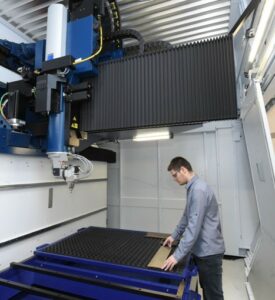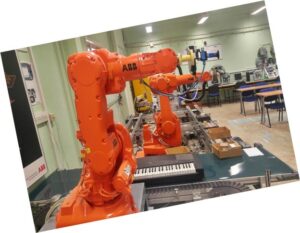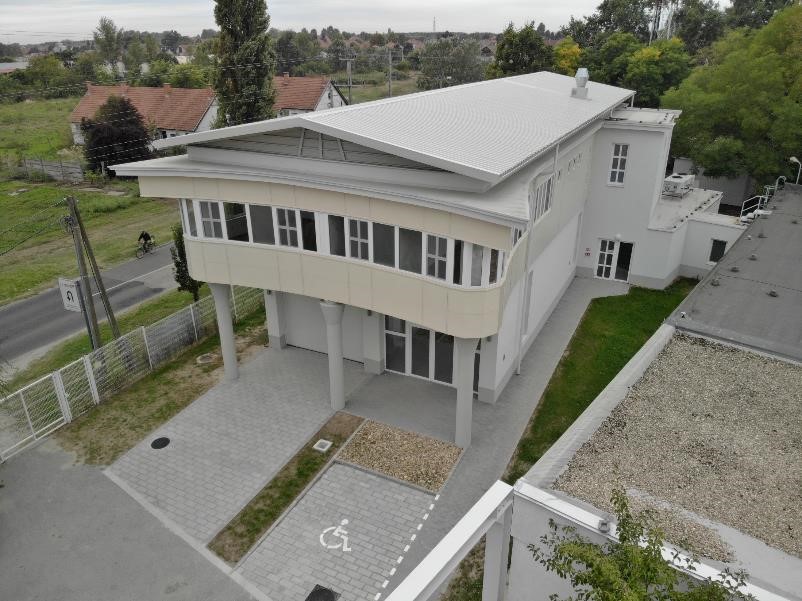WORKSHOPS, LABORATORIES
Throughout its more than 50-year history, GAMF has placed great emphasis on providing students with state-of-the-art technology, tools and equipment. It is difficult to keep up with technological advances, but our faculty has always found the resources to constantly renew its tools and machinery. Grant funding and the contribution from vocational training have helped us to do this. Workshops and laboratories play a major role not only in practice-oriented teaching but also in research and development. Several company collaborations and research projects are a hallmark of this area.
DIODE LASER CENTRE
 Diode Laser Centre The Diode Laser Centre, the only one of its kind in Hungary, will play a special role in the life of the GAMF Faculty and the Department of Materials Technology. The lasers will be used mainly in education and for research for our industrial customers.
Diode Laser Centre The Diode Laser Centre, the only one of its kind in Hungary, will play a special role in the life of the GAMF Faculty and the Department of Materials Technology. The lasers will be used mainly in education and for research for our industrial customers.
The centre will house laser equipment with 3 different diode laser beam sources:
– A high-performance diode laser for 3D industrial machining,
– High-performance 3D diode lasers for high-speed 3D diode lasers, femtosecond pulse lasers, scanner optics for micro and nano technology, development research directions,
– direct diode laser with robotic movement for machining of polymers and specific applications.
The technological development and practical application of the research will, among other things, increase the wear resistance of metal tools, which can be used by the automotive industry. In addition to traditional laser technologies such as cutting and welding, the new centre will develop technologies such as heat treatment, hybrid bonding and surface modification.
ROBOTICS LABORATORY
 In the robotics laboratory, several types of robots (IBM SCARA, BOSCH SCARA, ABB IRB 540) are used to teach robotics. The NORGREN and FESTO PLC controlled workstations, also located here, help to demonstrate and teach the control of manipulators. Students can use the ABB Robot Studio with 12 computers to practice robot programming. We have a laboratory well equipped to apply both teach-in and off-line programming methods. The ABB robot also has a camera that acts as an intelligent sensor for the robot, guiding it by shape recognition.
In the robotics laboratory, several types of robots (IBM SCARA, BOSCH SCARA, ABB IRB 540) are used to teach robotics. The NORGREN and FESTO PLC controlled workstations, also located here, help to demonstrate and teach the control of manipulators. Students can use the ABB Robot Studio with 12 computers to practice robot programming. We have a laboratory well equipped to apply both teach-in and off-line programming methods. The ABB robot also has a camera that acts as an intelligent sensor for the robot, guiding it by shape recognition.
HYDRAULICS LABORATORY
The hydraulic test benches are equipped with the basic components, power supplies, pressure, speed and flow transmitters to demonstrate and measure the characteristics of hydraulic components. The measurements are carried out partly on ADVANTECH and partly on National Instruments measuring modules, USB and RS485 bus systems, using a computer. Measurement tasks include recording the characteristics of the self-regulating pump, the characteristics of the direct drive and pilot driven pressure relief valve, the determination of the characteristics of the hydraulic motor, and the measurement of the throttle valve and flow control valve. The BOSCHREXROTH workbench and the simulation program Fluid-H provide the opportunity to practice the basic connections.
MEASUREMENT AND SIGNAL PROCESSING LABORATORY
The laboratory is equipped with workstations for PC-based measurements. One group of workstations is based on ADVANTECH modules, the other on National Instruments modules. Thus, the development software used is of two types, GENI (ADVATECH) and LABVIEW (NATONAL INSTRUMENTS). The workstations are suitable for temperature measurement and programming of measuring equipment. Three types of camera workstations form the basis for the training in industrial image processing: the DVT LEGEND 544C, the COGNEX In-Site 5001, and the camera and computer with NI vision card. Accordingly, the software used are FrameWork, In-Site Explorer, and Vision Builder. The exception in higher education is that industrial image processing is taught as a separate subject. Also exceptional is the CUBE5 high-speed camera, which is used to study short-time transient phenomena.
PNEUMATICS LABORATORY
The pneumatics laboratory is based on FESTO components and covers the entire spectrum of pneumatics education. The training starts with basic pneumatics, followed by electro-pneumatics, then sensorics and PLC programming using VEEP and Siemens PLC. The tasks are presented on a magnet board, which is used to simulate the connections by hand. In addition, the Fluidsim-P simulation computer program is available to students.
SCADA LABORATORY
Three four-cylinder Mitsubishi workstations with PLCs are available for the development of control systems. In our department, research and development work related to the application and system integration of SCADA (Supervisory Control and Data Acquisition) systems started in the mid-1990s, resulting in several engineering works published in the Hungarian literature, and accordingly, the SCADA laboratory became a new element of the laboratory structure. Thus, in the field of application development of SCADA systems, we have our own achievements. The evolution of the industry has confirmed our ambitions and development achievements in this new direction. Today, however, SCADA tools have emerged as a powerful new trend at the HMI (Human-Machine Interface) level, and today’s requirements support the need for development and research in this area, for which we also have the necessary tool background.
PLASTIC FORMATION LABORATORY
In the field of thin sheet forming, a modern environment is available to students and partners alike. From investigations that shed light on basic ductility characteristics (e.g. r-n studies), to the study of wrinkling characteristics, recoiling, reshaping of flow curves for large deformation, to the recording of complex forming limit diagrams, all the tools are available in the laboratory. The ERICHSEN 142-40 electrohydraulic plate tester, supported by a VIALUX in process® optical deformation measurement system, allows state-of-the-art analysis of deep drawing or stretch forming tests. A PYE 100 hydraulic press is used to achieve high pressing forces, together with a KDS-40 excenter press and a GSH-41 forging machine for training and research.
MATERIALS TESTING LABORATORY
For the determination of the basic mechanical properties of metals during destructive material testing, we use the following equipment: universal material testing machine INSTRON 4482, hydraulic testing machines ZD 10 (100kN) and ZD 40 (400kN), Charpy impact tester (300J), rotary-pressing drilling machines, hardness measuring machines for all hardness measurements.
The fabric structure is examined with Epityp, Neophot-2, Olympus GX41 metal microscopes, image digitizing camera, stereo microscope, and micro hardness tester. The microscopic examinations are prepared using diamond disc cutting machines, hot-embedding equipment, diamond disc grinding and polishing machines. The determination of the composition of iron, aluminium, copper and magnesium alloys can be carried out using a Foundry-Master-Pro spectrometer.
Non-destructive flaw detection equipment: lilliput 200 and 120 industrial X-ray machines, USM-2 ultrasonic material testing equipment, magnetic crack detector. Our laboratory also offers liquid penetration testing and stereo-microscopic detection of surface defects.
Some of the material tests and measurements carried out at our faculty are accredited.
HEAT TREATMENT LABORATORY
In the laboratory, our students can observe in practice the main heat treatments carried out on steels and other alloys, or monitor the changes that occur when they are cooled from the molten state. Our facilities are also suitable for industrial heat treatment and research work: small laboratory furnaces, induction tempering equipment, industrial-sized heat treatment furnaces (KCO50/30-80, 2KXO30/20/50, KSO30/20/50), retort furnaces for cementation and nitriding. The rapid cooling of the workpieces is assisted by an ABB IRB 140 robot.
WELDING WORKSHOP
In the 10 workstations laboratory, which is a TÜV welding examination centre, practical training in flame welding, flame cutting, MMA, MIG-MAG, TIG welding and spot welding is provided, not only for our students, but also for welding courses (OKJ flame welding, coated, consumption and tungsten electrode welding).
